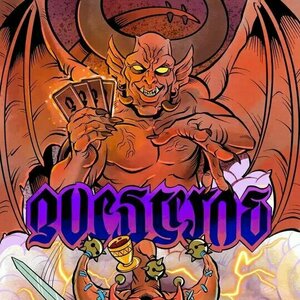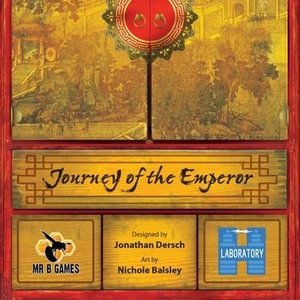Leanne Crabtree (480 KP) rated Born To Be Wilde (Immortal Vegas, #3) in Books
Jan 7, 2021
I was more into this than the previous ones, the series is now starting to progress at speed, with more players coming into the game in relation to the tarot cards and their representatives. Very interesting concept, although I admit I know nothing about it at all, so Sara's explanation when she reveals her picks are rather interesting.
The thing that started in book 1 with Sara and the Magician progressed quite a lot in this one, and I have to say I was excited for it happening.
Cannot wait to read book 4.
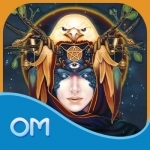
Dreams of Gaia Tarot
Lifestyle and Book
App
The Dreams of Gaia Tarot is for those who desire unity within themselves, their relationships, and...
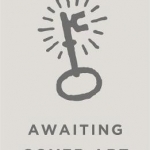
The Hanging Girl
Book
A twisting, turning thriller from the author of With Malice Two girls, one fatal reading ...because...

Temptation Returns (Recalled to Love #1)
Book
Antonio returns from the Marine Corps to begin a new life as a civilian. While visiting Cape Cod, he...
Military Contemporary Romance
Purple Phoenix Games (2266 KP) rated Questeros in Tabletop Games
Jan 21, 2021
Ero is the goblin court jester from the open who has been “chosen” to quest about the land to rid it of the ne’er-do-wells of the realm. In this solo adventure mode of Questeros the player will be donning the visage and character of Ero as they travel about developing their skills and having encounters with powerful beings. It is up to the player to guide Ero through the kingdom and rid it of the foul that is plaguing it.
DISCLAIMER: We were provided a prototype copy of this game for the purposes of this review. These are preview copy components, and I do not know for sure if the final components will be any different from these shown. Also, it is not my intention to detail every rule in the game, as there are just too many. You are invited to download the rulebook, back the game through the Kickstarter campaign, or through any retailers stocking it after fulfillment. -T
To setup the solo game, fondly and ingeniously-named “Ero’s Quest,” follow the rulebook to divide the tarot cards into their specific stacks and splays so that it roughly imitates the photo below. Draw a hand of five cards from the deck and the game may begin.
On a turn the player has a choice of seven actions that may be performed in any order. Each action may only be performed once per turn and when the turn is over the final action is Rest. To use the Develop action the player will place a card from their hand onto the Blades, Staves, or Orbs stacks in next-numerical order. This increases Ero’s attack and spending power. To Puchase cards Ero will spend Orb cards to look at the spent Orb value worth of cards from the draw deck, add one to their hand, and place the others at the bottom of the draw deck. At times Ero will need to Forget cards from hand in order to make room for more cards to enter it via the Learn action. Forgetting simply discards cards from hand while learning draws cards into hand from the draw deck. Recover is used to stand any kneeling/turned/rotated cards into an unused state by destroying cards of higher value from hand. As stated previously, to Rest is to end the turn by discarding the top card of the draw deck to setup the next turn.
I purposely left out the final action choice, Encounter, for a specific reason. Ero’s Quest is won when the entire deck of 21 Encounter cards is defeated. Each of these cards depicts a person or persons that Ero meets in his travels. Some require Ero to give them cards in order to pass. Some require Ero to succeed in battle against them in order to progress. In either case, Ero will need to get through the entire deck before his draw deck runs out in order to win the game.
Battle in Ero’s Quest is turn-based, where the Encounter persona attacks first, thus handing Ero wounds immediately. Wounds are suffered by spending Cups cards in value of the wound taken. For example, the Assassin is a value of 12, so they immediately wound Ero for 12 damage at the start of the encounter. Ero will spend a value of 12 Cups cards to simulate damage taken. Ero may then attack with a combination of available Blades, Staves, and any Ally cards obtained – one of each per attack turn. If the Encounter is defeated, Ero lives on. If the Encounter is not yet defeated, the battle continues with the Encounter card dealing damage and Ero responding with damage until one is defeated.
As mentioned earlier, the Encounter deck contains 21 cards with six of these being combat encounters. Ero has a ton of work to do and when each turn requires a card to be discarded before a new round may begin, they also have an in-game clock ticking and ticking each turn. However, if Ero is able to Develop their skills and overcome all the Encounters, the game is won and Ero becomes a Hero.
Components. Again, this is a prototype copy of the game, and many items are not fully completed in this version. That said, what we were provided is a large stack of tarot-sized cards, a first player Ero token (for multiplayer games), and a large pad of scoring sheets (also for multiplayer use). The cards are great quality and feature some really excellent artwork (on the cards that have the completed artwork on them). I do like the art style employed here, as I am a fan of fantasy themes, and I know that the game will probably ship with similar iconography, but may also be color-coded for ease of reference. All in all I believe Questeros is headed in the right direction for components, and a successful Kickstarter campaign may improve that even further.
The gameplay for the solo adventure of Ero’s Quest is really decent and engaging. So often I have found myself crunching numbers in my head and attempting to utilize my horrible card-counting “skills” to determine my next actions to take. Turns can be very intense and fruitful, or very frustrating and minimal, especially when you are waiting to draw that 3 of Blades so you can place it on the 2 of Blades sitting there, but it just won’t come up. And here you are sitting with the 4, 5, and 6 of Blades in hand and a Necromancer staring right at you awaiting combat. That is the definition of frustrating, but games usually take less than an hour, so even if an entire game is chock full of these turns, you can always setup a new game quickly and hope for better luck.
I like this one. I really do. It is interesting, has a great theme, so many delicious choices, and multiple ways to use the cards for game modes or tarot decks or even RPG FATE decks! On versatility alone I would rate this one high. If you are looking for a little card game to satisfy your mid-weight solo thirst, then check out Questeros. If you need a tarot game in your collection (as I look at mine and see no others), consider this one. It takes up very little shelf space, but looks great on the table and offers a great little solo experience. I have yet to beat the solo adventure, but Ero is calling my name for another go, and I might just have to give in. Again. And again.
Kristina Rodriguez (1 KP) rated Poison Princess (The Arcana Chronicles, #1) in Books
Jun 29, 2018

Wicca, Orion Plain and Simple
Book
A practical beginner's guide to Wicca, its traditions, spells and rituals. An accessible,...
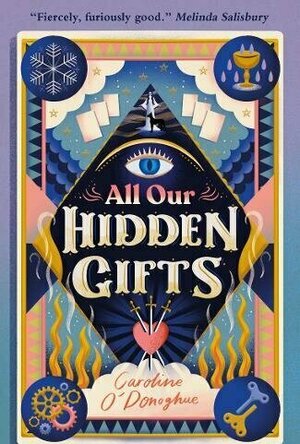
All Our Hidden Gifts (All Our Hidden Gifts, #1)
Book
Maeve Chambers doesn't have much going for her. Not only does she feel like the sole idiot in a...
Purple Phoenix Games (2266 KP) rated Journey of the Emperor in Tabletop Games
Jun 13, 2019
We were very excited to receive this game from Laboratory H for preview before they began their Kickstarter campaign. We love games with an Asian influence, and it seemed to have touches and inspirations from Tokaido, another favorite of ours. What we received is its own beast with great art and components.
So like I alluded to in my intro, you play a party planner drafting the best path cards to build the most killer journeys for your Emperor. You are dealt a hand of path cards – big, beautiful cards – that can feature different combinations of Journey Start, Journey End, animals, and lanterns icons. To assist you in focusing your strategy, you are also dealt four Emperor’s Favorites cards, from which you will keep two and discard the others. From the large stack of remaining path cards you reveal six as an offer and the game can begin.
On your turn you will be drafting cards from the offer, playing cards from your hand, and trying to complete objectives for points on your Emperor’s Favorites and Journey Start and End cards. These cards have scoring conditions printed on them to help tailor your play. So a Journey End card could have a picture of a flower on it (as all Start and End cards do) with a scoring condition of 3 points for every tiger icon on this completed Journey (I want to call this a “scoring panel” for this review to make it easier). So then you want to concentrate on getting as many tiger icons into this Journey to score tons of points. Or perhaps a Journey Start card will have a different flower, and state that you get 21 points for every set of tiger, dragon, and turtle icons. Either way, you now have a goal to achieve and you spend the game trying to amass the most points from these scoring opportunities and those found on your Emperor’s Favorites cards, which have similar scoring iconography. Most points at game end wins!
While this seems easy and that there is no inherent strategy, let me introduce the wrinkle. You can only score points from completed journeys. Each completed journey has at least a Journey Start and Journey End card. These cards will be adjacent to each other to form a pathway through the cards. You may never add a path card to your journey between two existing cards, but they can be added to the edges of a journey – either at the beginning or the end. If you add to the beginning, you will completely cover up the Journey Start card’s scoring panel so that you can create an uninterrupted path. Herein lies the strategy. At what point do you take the plunge and cover up a scoring panel to add to your journey? Yes, you can get way more points by doing this, but in a 4-player game you only have EIGHT turns. So do you feel like you will be able to draft just the right cards to maximize your scoring or will you falter and not be able to complete a journey in time, thus forfeiting any points you could have scored? Oh, you clever game…
Components. This is a smaller card game. The Emperor’s Favorites cards are about the mini size you would find in OG Ticket to Ride. The path cards are much larger and similar to the tarot sized cards, if not even taller. Both are of great quality with the wonderful linen finish (that I’m learning is more polarizing than I originally thought, but I love it!). Our review copy came with a few scoring sheets to tally the final scores – which we didn’t use correctly but still arrived at the correct final scores. The art in this game is truly breathtaking. The details in the murals in just the backgrounds of the path cards are amazing, and the flowers and animals are really really incredible. If we had one small gripe about the art, it was mentioned that someone could not tell much of a difference between the tiger and the dragon icons on the path cards. I didn’t have much of a problem deciphering the difference, but they are very similar in color and style, so I can see how others may view this as an issue for them.
DISCLAIMER: These are preview copy components, and I do not know if the final components will be similar or different, or if the Kickstarter campaign will alter or add anything through stretch goals. That said, I am very satisfied with the components provided in this game.
This is a really good game. A lot more thinky than Tokaido (using a similar theme), and ultimately more enjoyable because you really feel you have control over your turns and aren’t just going for the best available at the time. You actually have to employ strategy here in order to be competitive. And although this is not a spiteful take-that game, you most certainly can foil your opponents’ plans indirectly by drafting their much-needed path cards. The art is amazing, the game is a great length, and you really want to keep playing. To me, that is the mark of a really good game. All that said, I would recommend this one if you are looking for a quick game that gives you all the good feelings of Tokaido but also scratches more of a gamer’s itch for actual strategy. Oh, and it’s absolutely beautiful.
